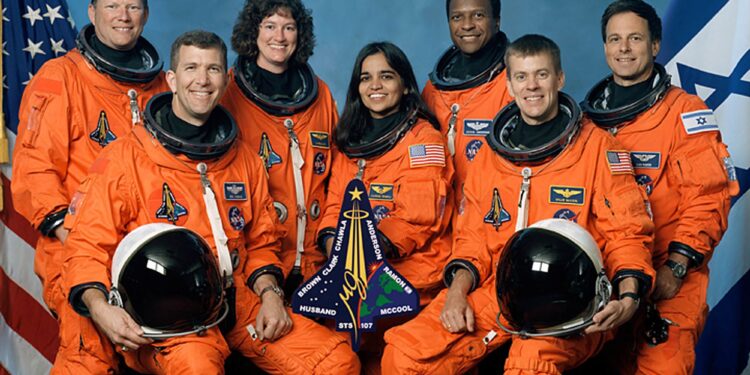The Space Shuttle Columbia, a magnificent feat of engineering and a symbol of human ingenuity, etched its name into the annals of space exploration. Launched for the first time on April 12, 1981, as part of the STS-1 mission, Columbia became NASA’s first operational space shuttle, paving the way for decades of scientific discovery and international collaboration.
Named after the historic exploration ship under the command of Captain Robert Gray, the Space Shuttle Columbia became a workhorse of NASA’s fleet. Over its 22-year career, Columbia completed 27 missions, contributing significantly to our understanding of space and scientific research. One of its most notable missions was the deployment of the Chandra X-ray Observatory in 1999, a crucial tool for astronomers studying the universe’s high-energy phenomena.
However, Columbia’s tragic end on February 1, 2003, during the STS-107 mission, left an indelible mark on the history of space exploration. The shuttle disintegrated upon reentry into Earth’s atmosphere, claiming the lives of seven astronauts: Rick D. Husband, William C. McCool, Michael P. Anderson, Kalpana Chawla, David M. Brown, Laurel B. Clark, and Ilan Ramon, Israel’s first astronaut.
The investigation into the Columbia disaster revealed that a piece of foam insulation had struck the left wing during liftoff, damaging the shuttle’s thermal protection system. This damage ultimately led to the catastrophic failure during reentry. The incident prompted a reevaluation of NASA’s safety protocols, resulting in significant changes to shuttle missions and a renewed commitment to crew safety.
Despite the tragedy, the legacy of the Space Shuttle Columbia endures. The lessons learned from its missions, both successful and tragic, shaped the future of space exploration. The Columbia Accident Investigation Board’s recommendations led to improvements in shuttle design and safety measures, setting the stage for subsequent space endeavors.
Columbia’s contributions to scientific research, satellite deployment, and space station assembly marked a golden era in space exploration. Its missions brought nations together, fostering international collaboration in the pursuit of knowledge beyond our planet. The shuttle’s legacy lives on in the continued pursuit of human space exploration, as it laid the groundwork for subsequent missions to the International Space Station and beyond.
As we remember the Space Shuttle Columbia, we honor the courage and dedication of the astronauts who ventured into the cosmos, pushing the boundaries of human achievement. Despite the tragedy, Columbia’s legacy inspires future generations to reach for the stars and carry the torch of exploration into the vast unknown of space.



Recent Comments